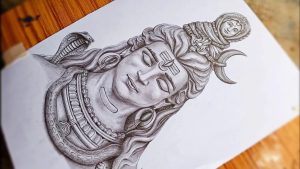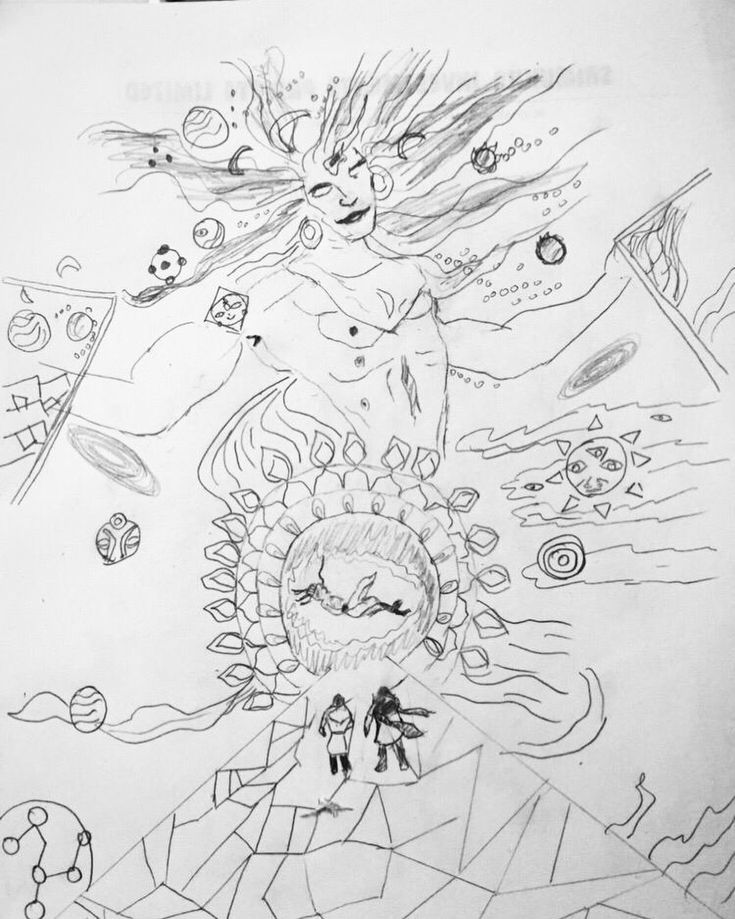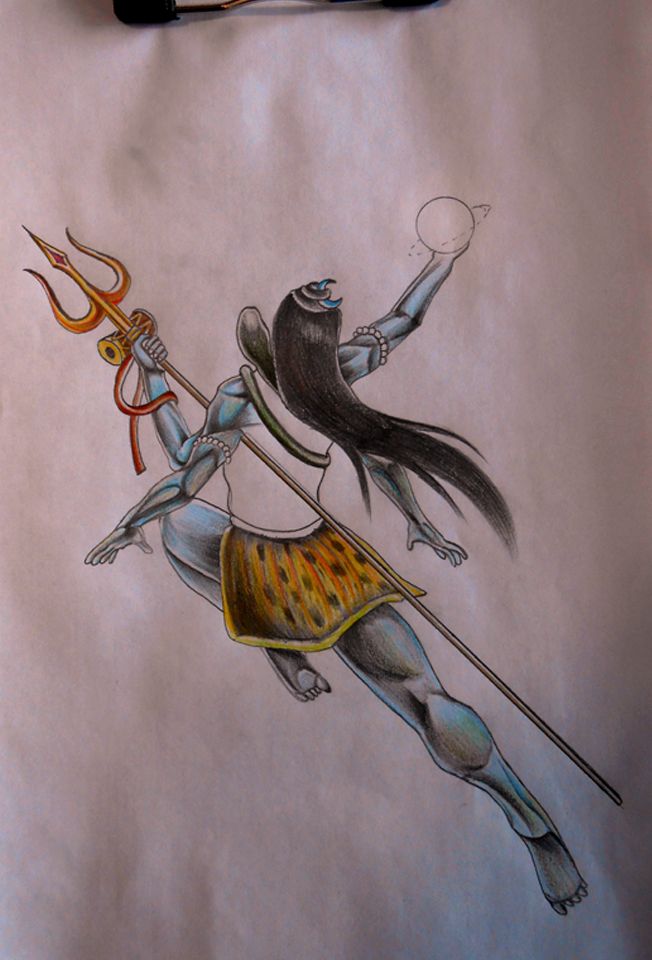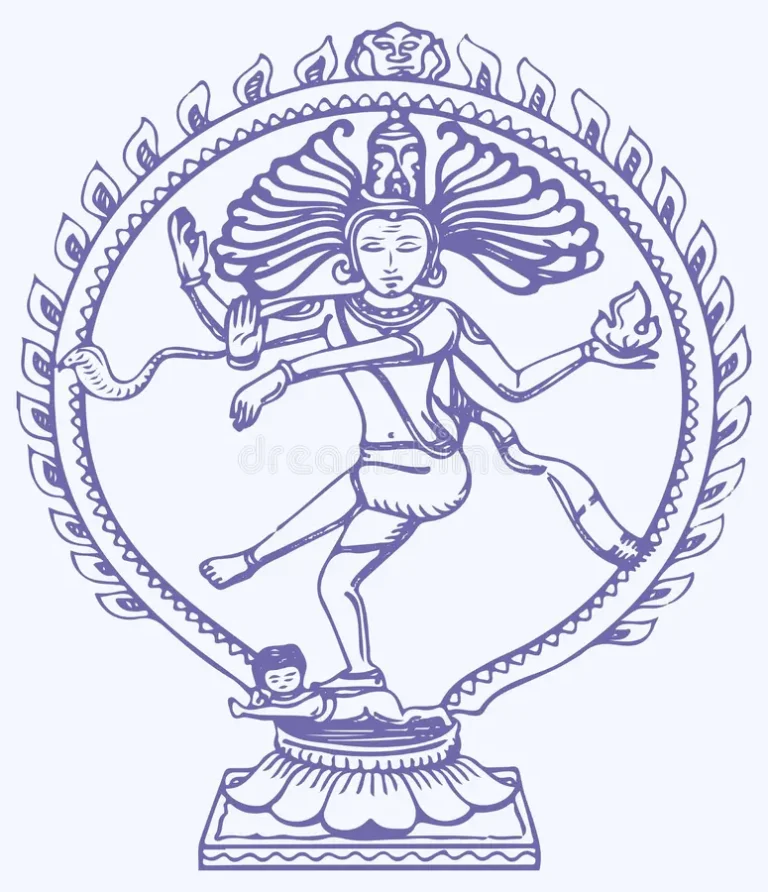A Lord Shiva drawing is a profound expression of artistic devotion, capturing the essence of one of the most revered deities in Hinduism. The intricate details and symbolic elements within the drawing often reflect the divine attributes associated with Lord Shiva. The flowing locks, adorned with the sacred Ganges, symbolize the omnipresent nature of the deity, representing the perpetual flow of life.
- The Spiritual Essence in Shiva Artwork
- A Visual Journey into Cosmic Energy
- Capturing the Majesty of Lord Shiva on Paper
- Depicting Nataraja in Shiva Drawings
- Creating Spiritual Connections with Shiva Art
- Drawing Lord Shiva’s Mystical Portraits
- Colors and Symbolism in Lord Shiva Art
- Frequently Asked Questions (FAQs)

The Spiritual Essence in Shiva Artwork
Delving into the realm of Shiva artwork is not just an artistic exploration, but a deep dive into the heart of Hindu spirituality. Lord Shiva, the destroyer and creator, the ascetic and the cosmic dancer, pulsates with a multifaceted energy that artists attempt to capture in their strokes. Let’s unpack the spiritual essence that imbues these stunning creations:
Symbolism that Whispers Divine Secrets: Every element in a Shiva painting is laden with meaning. The trident, his primary weapon, symbolizes the destruction of illusion and the path to liberation. The third eye, blazing on his forehead, represents wisdom and insight beyond the physical realm. The crescent moon adorning his hair speaks of his connection to the cycles of creation and destruction. Each symbol becomes a whispered mantra, guiding the viewer on their own spiritual journey.
A Palette of Divine Energy: Colors in Shiva artwork aren’t mere aesthetics; they’re vibrant expressions of his cosmic power. Azure blues might shimmer with his celestial connection, while fiery reds might capture his destructive aspect. The contrast of light and shadow, often prominent in Shiva paintings, reflects the interplay of his cosmic play, the ebb and flow of creation and dissolution.
Beyond Form: The Path to Meditation: True appreciation for Shiva art goes beyond analyzing forms and symbols. It lies in entering a meditative state, allowing the artwork to transport you to the realm of Shiva’s consciousness. Gaze at the serene blue of his throat, where the poison of negativity is transformed into wisdom. Focus on the rhythm of his dance, merging with the cosmic pulse of life. Shiva art becomes a portal, inviting you to experience the divine within yourself.
A Mosaic of Interpretations: The beauty of Shiva artwork lies in its ability to speak to each viewer in a unique way. What one person sees as a fierce destroyer, another might perceive as a compassionate protector. The essence of Shiva is multifaceted, allowing each soul to find their own connection, their own interpretation of his divine mysteries.

A Visual Journey into Cosmic Energy
Prepare to blast off on a visual odyssey through the swirling nebulae and pulsing stars of cosmic energy! Buckle up your imagination, for we’re about to embark on a journey beyond the earthly plane, where galaxies dance and the universe whispers its secrets in starlight.
Paint the canvas of the cosmos:
- Starry swirl: Let swirling brushstrokes of vibrant yellows, oranges, and reds mimic the birth of a supernova, a celestial explosion painting the canvas with raw energy.
- Nebula’s ethereal dance: Capture the wispy tendrils of nebulae in soft gradients of violet, blue, and green, their ethereal forms like cosmic ballerinas gliding through the darkness.
- Black holes’ enigmatic allure: Dare to depict the enigmatic pull of a black hole, its event horizon a swirling vortex of deep purples and blues, hinting at the mysteries it holds.
- Constellations’ celestial stories: Bring constellations to life, weaving the stars into mythical figures and beasts, their stories etched in the stardust.
Feel the rhythm of celestial movement:
- Comet’s fiery trail: Draw a comet streaking across the sky, its fiery tail a streak of crimson and gold, leaving a trail of stardust like whispers in its wake.
Engage the senses beyond sight:
- Cosmic whispers: Infuse your art with the imagined sounds of the universe – the low hum of black holes, the crackle of nascent stars, the whispers of ancient galaxies.
- Textural whispers of space dust: Experiment with textures to recreate the feeling of meteor showers, the grit of asteroids underfoot, the smooth coolness of a comet’s icy core.
- Ethereal scents of cosmic clouds: Imagine the scent of nebulae – a metallic tang of newborn stars, the musky aroma of interstellar dust, the faint sweetness of stardust.
Remember, your journey is unique:
- Embrace your artistic voice: Let your interpretation of cosmic energy flow through your chosen medium – paint, sculpture, digital art, even poetry or music.
- Infuse your own experience: Draw inspiration from scientific discoveries, astronomical photographs, or even your own dreams and fantasies about the universe.

Capturing the Majesty of Lord Shiva on Paper
Lord Shiva, the cosmic dancer, the destroyer and creator, holds an undeniable mystique that has captivated artists for centuries. Translating his multifaceted grandeur onto paper is a challenge both daunting and exhilarating. But fret not, dear artist, for here are some brushstrokes to guide you on your creative pilgrimage:
Symbolism’s Silent Song: Every element in a Shiva depiction is laden with meaning. The trident, his weapon of choice, symbolizes the destruction of illusion and the path to liberation. The crescent moon adorning his hair whispers of his connection to the cycles of creation and destruction. Don’t shy away from symbolism – let it become the silent language, the visual mantra that guides viewers deeper into your artistic ode to Shiva.
The Dance of Duality: Shiva thrives in the paradox. He is both destroyer and creator, stillness and movement, ascetic and cosmic dancer. Capture this duality in your strokes. Let his Tandava, the cosmic dance, portray the fierce joy of destruction paving the way for creation. Balance his serene meditation pose with the dynamic rhythm of his dance, reminding us that life itself is a beautiful dance of opposing forces.
A Kaleidoscope of Cosmic Color: Colors in Shiva art aren’t mere aesthetics; they’re vibrant expressions of his divine energy. Azure blues might shimmer with his celestial connection, while fiery reds could capture his destructive aspect. Play with contrasts – the celestial blue of his throat where poison transforms into wisdom against the vibrant orange of his flame-like hair.
Beyond Form: Unveiling the Divine Within: True appreciation for Shiva art goes beyond analyzing forms and symbols. It lies in entering a meditative state, allowing the artwork to transport you to the realm of Shiva’s consciousness. Gaze at the serene blue of his throat, where negativity transforms into wisdom. Focus on the rhythm of his dance, merging with the cosmic pulse of life. Your art becomes a gateway, inviting viewers to experience the divine within themselves.
Embrace Your Artistic Voice: There’s no single, definitive way to capture Shiva’s majesty. Experiment, explore, and let your unique artistic voice guide your hand. Whether you choose the delicate precision of pen lines or the expressive splash of watercolor washes, let your interpretation of Shiva’s essence flow through your chosen medium.
A Symphony of Interpretations: Remember, the beauty of Shiva artwork lies in its ability to speak to each viewer in a unique way. What one person sees as a fierce destroyer, another might perceive as a compassionate protector. Don’t seek to impose a singular interpretation – allow your art to act as a canvas for personal connections and diverse perspectives.

Depicting Nataraja in Shiva Drawings
Nataraja, the dancing form of Lord Shiva, pulsates with a dynamic energy that begs to be captured on paper. To depict him in your Shiva drawings, here are some brushstrokes to ignite your creative fire:
The Dance of Creation and Destruction: Let your lines and strokes swirl with a captivating tension. One foot planted on the dwarf Apasmara, symbolizing ignorance, while the other gracefully kicks aloft, signifying liberation. Capture the rhythm of his dance, the cosmic play of creation and destruction unfolding in every movement.
A Symphony of Symbols: Don’t underestimate the power of symbolism. The trident in his hand, a weapon against illusion, can be rendered with sharp, purposeful lines. The damaru, the drum of creation and destruction, can be depicted with delicate curves, hinting at the rhythm of the universe. Remember, each symbol is a whispered mantra, guiding the viewer deeper into your artistic interpretation.
A Kaleidoscope of Color: Let your palette sing with the multifaceted nature of Nataraja. Fiery oranges and reds might dance around his ankles, symbolizing his destructive aspect, while serene blues and greens could bathe his upper body, reflecting his celestial connection. Don’t shy away from contrast; let light and shadow play across his form, highlighting the duality of his nature.
Embrace Your Artistic Voice: Experiment with different styles and techniques. Charcoal might lend itself to the dramatic energy of his dance, while delicate ink washes could capture the ethereal aspects of his cosmic connection. Don’t be afraid to break the mold; let your unique artistic vision translate the essence of Nataraja onto paper.
A Portal to Meditation: Remember, your drawing is not just an image; it can be a portal to meditation. Invite the viewer to lose themselves in the rhythm of Nataraja’s dance, to connect with the cosmic pulse within themselves. Let your art become a window into the divine, a space for contemplation and introspection.
So, unleash your creativity, dear artist. Let your lines dance, your colors sing, and your pen become a conduit for the cosmic energy of Nataraja. Remember, your drawing is not just a depiction; it’s an offering, a gateway to a deeper understanding of the universe and our place within it. May your artistic journey be filled with inspiration, discovery, and a profound connection to the dancing Lord of the Cosmos.

Creating Spiritual Connections with Shiva Art
Creating Shiva art that fosters spiritual connections isn’t just about technical skill; it’s about harnessing your artistry as a bridge between the physical and the divine. Here are some brushstrokes to guide you:
Intention is Key: Approach your art with a focused intention. Are you aiming to evoke devotion, inspire contemplation, or incite personal reflection? This intentional energy will infuse your creation and guide viewers towards deeper experiences.
Embrace Symbolism: Don’t just depict Shiva’s form; weave his symbolism into your art. The trident, damaru, crescent moon, and even his posture all carry profound meanings. Research, understand, and integrate these symbols subtly into your artwork, allowing them to spark inner exploration in viewers.
Invoke the Senses: Go beyond visual representation. Incorporate elements that engage other senses. Perhaps a textured canvas evokes the roughness of his ascetic life, or subtle fragrance paints a scent of celestial musk in the air. Let your viewers perceive beyond sight, creating a multi-sensory experience.
Channel Bhakti: Imbue your art with bhakti, the devotional spirit of surrender. Let your strokes vibrate with reverence, your colors sing with adoration. This emotional energy will resonate with viewers who practice bhakti, creating a space for prayer and personal connection.
Tap into Individual Interpretations: Shiva’s essence is multifaceted, allowing for diverse interpretations. Don’t impose your own understanding; instead, create art that leaves space for personal reflection. Let viewers connect with him in their own way, finding their own meaning and spiritual resonance in your work.
Create a Space for Meditation: Consider how your art can facilitate meditation. Use calming compositions, harmonious colours, and inviting visuals to create a space for viewers to quiet their minds and connect with the essence of Shiva within themselves.
Share Your Gift: Don’t let your creations gather dust. Share your art with communities, temples, or online spaces where others can connect with it. By sharing your spiritual vision, you create opportunities for others to embark on their own journeys of connection.
Drawing Lord Shiva's Mystical Portraits
Capturing the enigmatic aura of Lord Shiva in a drawing requires delving into the depths of his mystique, using your artistry to illuminate the multifaceted divinity that transcends earthly understanding. Here are some strokes to guide your mystical portrait:
Embrace the Unseen: Instead of striving for photographic realism, capture the essence of Shiva’s inner world. Let his eyes, often closed in meditation, hint at the universe swirling within. Blur some outlines, suggest rather than define, inviting the viewer to participate in the creation of his unseen beauty.
Dance with Symbols: Don’t just depict his form; let symbols whisper his story. The damaru’s rhythm may echo in swirling lines, the crescent moon cast an ethereal glow on his forehead, and the trident emerge from the canvas as a beacon of liberation. Weave these symbols subtly, letting them guide the viewer’s gaze into the depths of his divinity.
Embrace Contradictions: Shiva thrives in paradoxes. He’s both tranquil and fierce, creator and destroyer. Don’t shy away from depicting this duality. Juxtapose serene lines with dynamic swirls, use contrasting colors to highlight his celestial radiance against the darkness of his destructive power.
Light and Shadow Play: Play with light and shadow as your allies. Let a celestial aura bathe his upper body, while his lower form remains shrouded in darkness, symbolizing the cycle of creation and destruction. Use bold shadows to accentuate his ascetic beauty, and allow shafts of light to reveal the wisdom in his gaze.
Beyond Form, the Divine Essence: Remember, the true art lies in capturing the essence of Shiva beyond his physical form. Use suggestive lines to hint at the cosmic dance behind him, let soft washes of color suggest the vastness of his consciousness. Invite the viewer to experience him not just as a figure on paper, but as a force that permeates the cosmos.
Experiment with Techniques: Don’t be afraid to break the mold. Explore charcoal’s smudged intensity to depict his fierce aspect, try delicate ink washes for his serene moments. Consider incorporating textural elements like sand or fabric to evoke the rawness of his ascetic life.
Colors and Symbolism in Lord Shiva Art
In the vibrant dance of colors and potent symbolism, Shiva art unfolds its majestic narrative. Each hue and line whispers secrets of the divine, inviting us to delve deeper into the enigmatic essence of the cosmic dancer. Let’s embark on a journey through this kaleidoscope of meaning:
The Symphony of Colors:
- Celestial Blues: Azure shades bathe Shiva’s throat, where poison transforms into wisdom. They speak of his cosmic connection, the vastness of his consciousness, and the serenity of his celestial realm.
- Fiery Reds: These vibrant flames flicker around his ankles, symbolizing his destructive aspect, the transformative power that clears away illusion. They hint at his fierce dance, the passionate rhythm of creation and destruction.
- Tranquil Greens: Soft greens often adorn his serene lower body, reflecting the fertile earth, the abundance he nourishes, and the balance he brings to the universe. They whisper of his ascetic life, his connection to nature, and his role as the guardian of all living things.
The Language of Symbols:
- The Trident (Trishula): This three-pronged weapon symbolizes the destruction of ego, karma, and illusion. It marks the path to liberation, the cutting away of negativity to reach the divine within.
- The Damaru: The rhythm of creation and destruction echoes in this drum. It represents the ever-changing nature of the universe, the cycles of life and death, and the cosmic dance that Shiva orchestrates.
- The Crescent Moon: Adorning his hair, the moon speaks of time’s cycles, the ebb and flow of creation and destruction. It also symbolizes fertility, rebirth, and the cyclical nature of existence.
- The Third Eye: Blazing on his forehead, this eye represents wisdom, insight, and the ability to see beyond the limitations of the physical world. It is a reminder of our own potential for inner vision and spiritual awakening.
Beyond the Canvas:
The colors and symbols in Shiva art transcend the visual; they are invitations to connect with the divine within. The blues may inspire meditation, the reds may ignite transformation, and the greens may reconnect us to nature. Remember, Shiva art is not just a depiction; it’s a doorway to deeper understanding, a space for personal reflection and spiritual growth.
Frequently Asked Questions (FAQs)
- Start with simple shapes: Begin by sketching basic shapes like circles, ovals, and rectangles to represent the head, torso, and limbs. This will help you build a foundation for your drawing before adding details.
- Pay attention to proportions: The proportions of a girl’s body are generally different from those of a boy. For example, the head is typically larger in proportion to the body, and the waist is narrower than the hips.
- Oversexualization: Avoid drawing girls in overtly suggestive poses or clothing. Focus on capturing their personality and individuality rather than their physical attributes.
- Clichés and stereotypes: Don’t fall into clichés like damsels in distress or overly bubbly princesses. Be creative and explore diverse representations of girls.
- Art books and tutorials: There are many great books and online tutorials available that can teach you how to draw girls in different styles. Look for resources specifically focused on female figure drawing or character design.
- Online communities: Join online communities or forums for artists who draw girls. This is a great way to get feedback on your work, learn from others, and stay inspired.




















